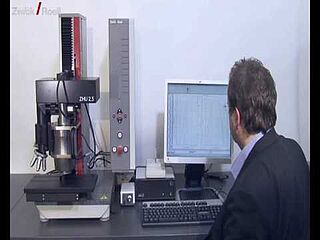Purpose of the test
- Dental ceramics used as filling material or as restorative material must, in addition to health and visual considerations, satisfy requirements regarding strength, wear and durability.
- Visual requirements can be custom-made by replicating the light effects of natural mineral dental enamel, including opalescence, fluorescence, and transparency through layers of color of varying intensity.
- Strength properties can, for example, be verified by means of hardness testing. Due to limited reflectivity, the optical hardness testing method to Vickers can only be employed to a limited degree. However the instrumented indentation test, based on measurement of indentation depth, has proven very effective.
- Other mechanical characteristics, in addition to hardness, can be derived from the entire test sequence, for example allowing creep or relaxation of the dental material to be measured.
Traceable, tamper-proof test results in accordance with FDA 21 CFR Part 11
Traceable tamper-proof test results
- Ever-increasing demands are placed on software used in the medical and pharmaceutical industries to document the traceability of completed actions.
- With the traceability option, testXpert III enables logging of all actions and changes before, during and after the test, making test results and the documentation traceable and protecting them from manipulation.
- Integrated user management and functions such as electronic records and electronic signature ensure that test results are always protected from tampering.
- Together with the organizational measures and procedure instructions that apply to the individual companies themselves, the requirements of FDA in 21 CFR Part 11 are fulfilled.
- ZwickRoell also offers a qualification service package (DQ/IQ/OQ) for validation support.
- testXpert III logs all test and system related actions and settings and can therefore always answer the question “When does who do what, why and who is responsible?”
Learn more about the testXpert III
Traceability option.
